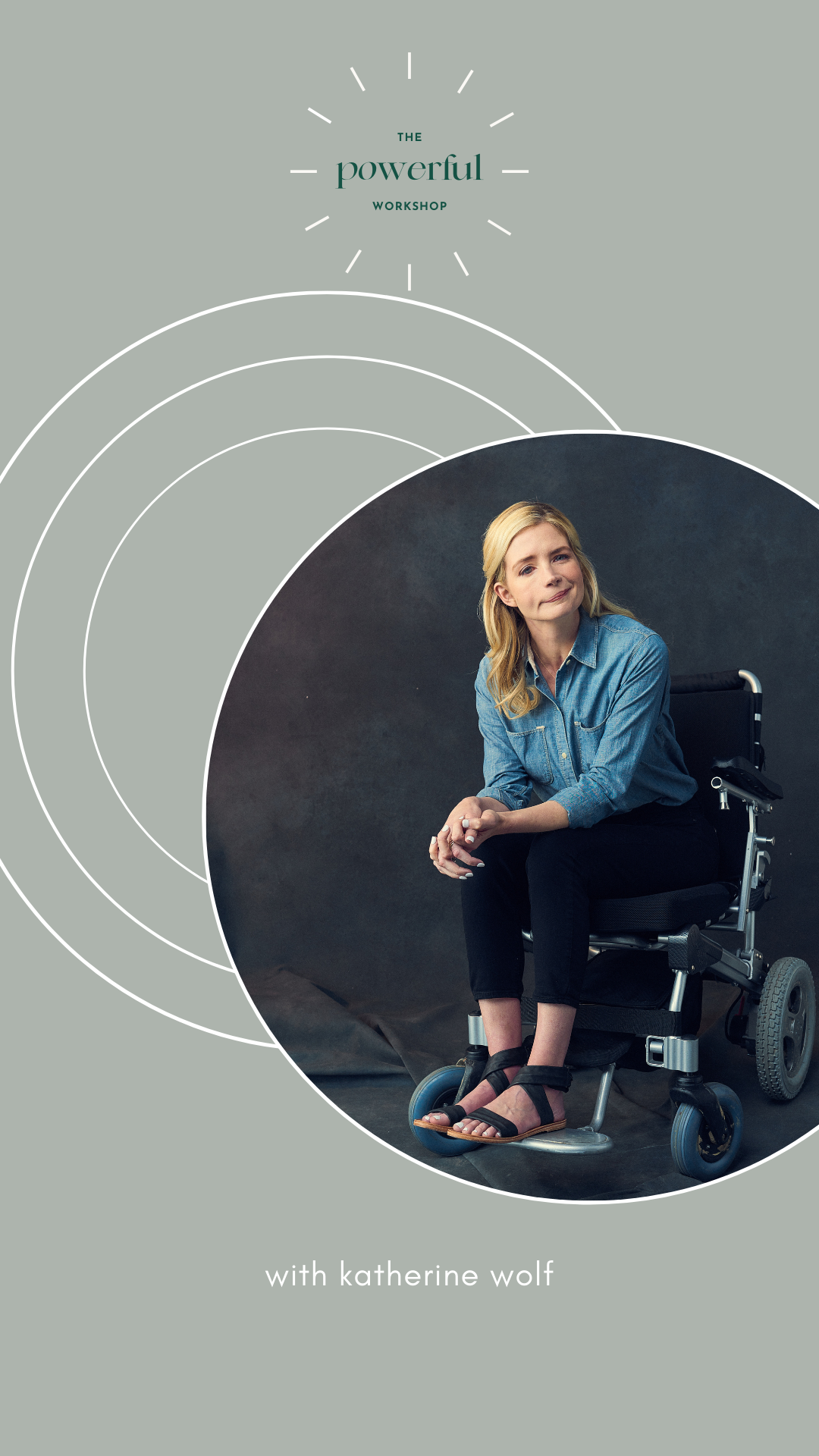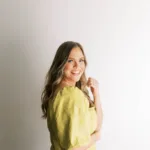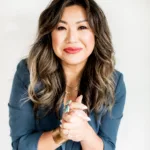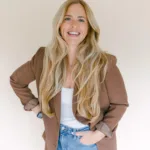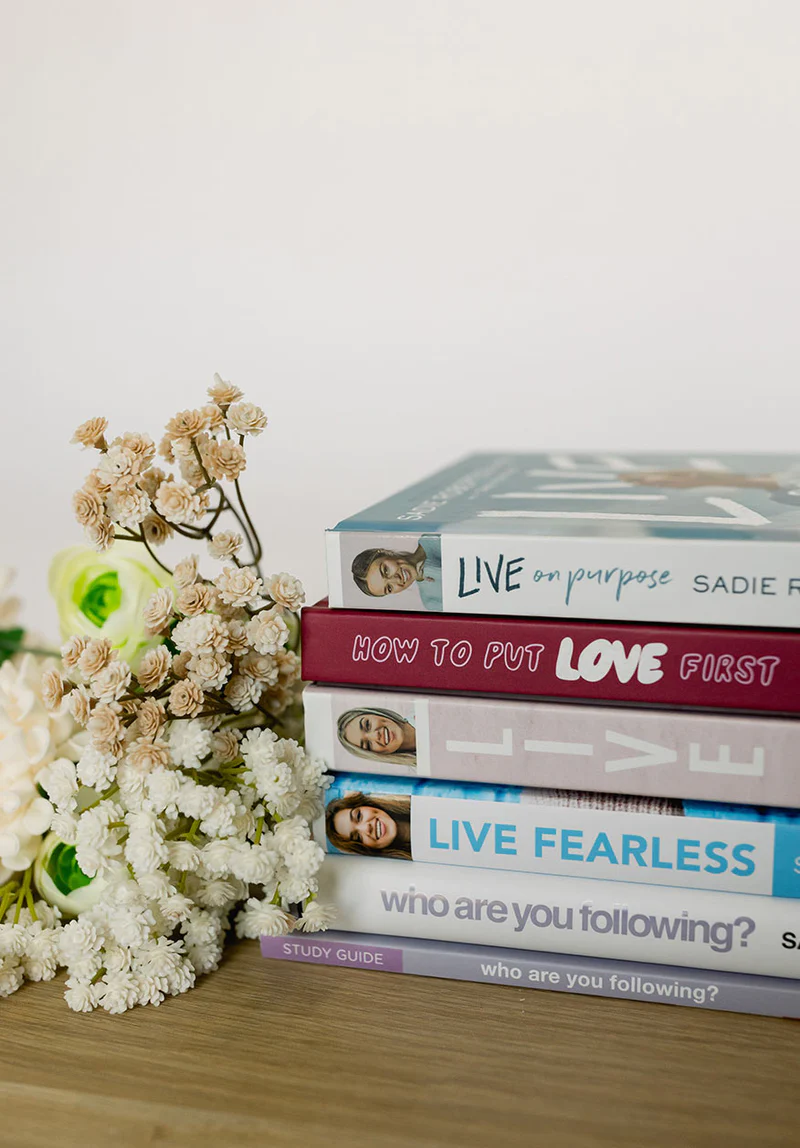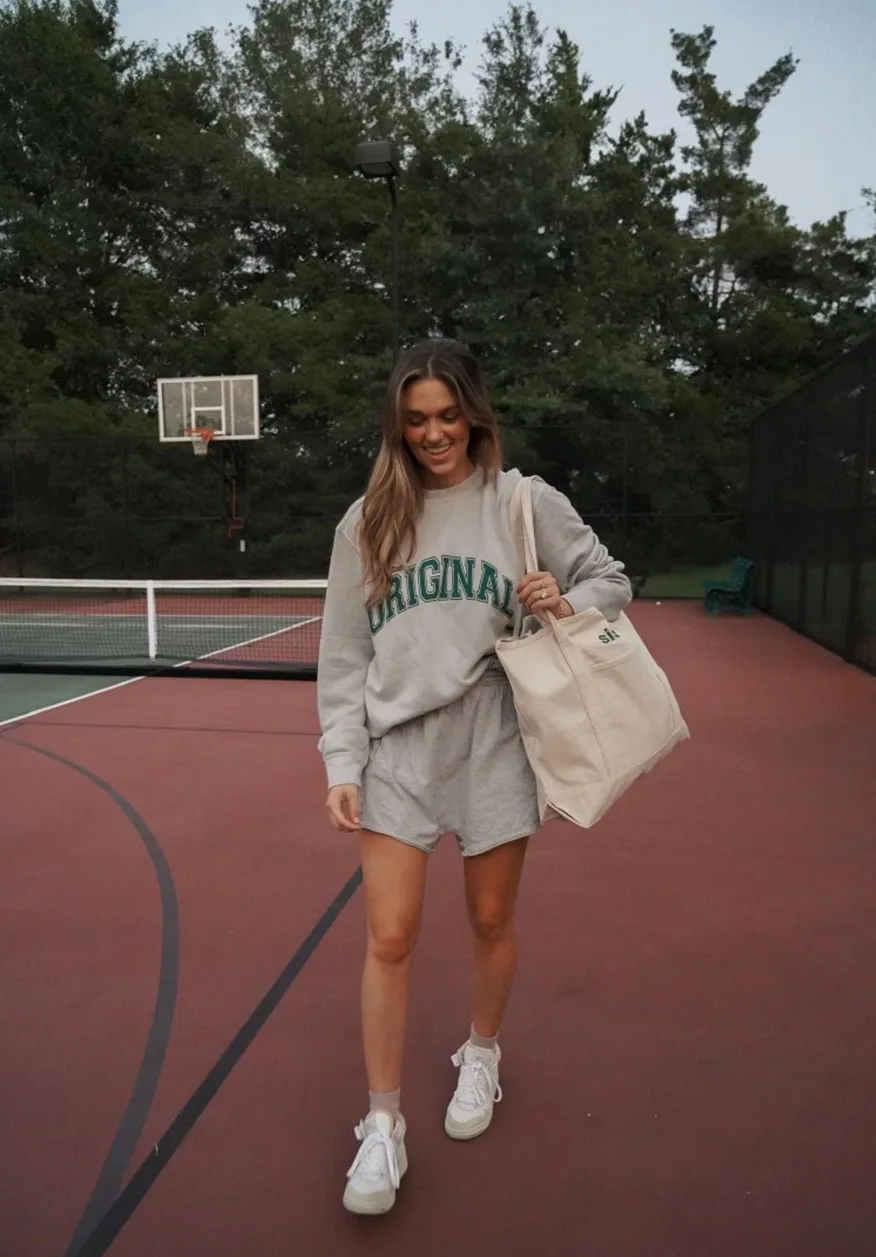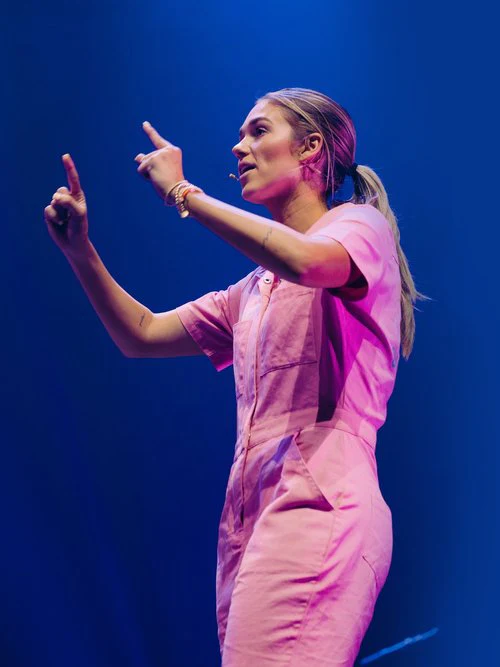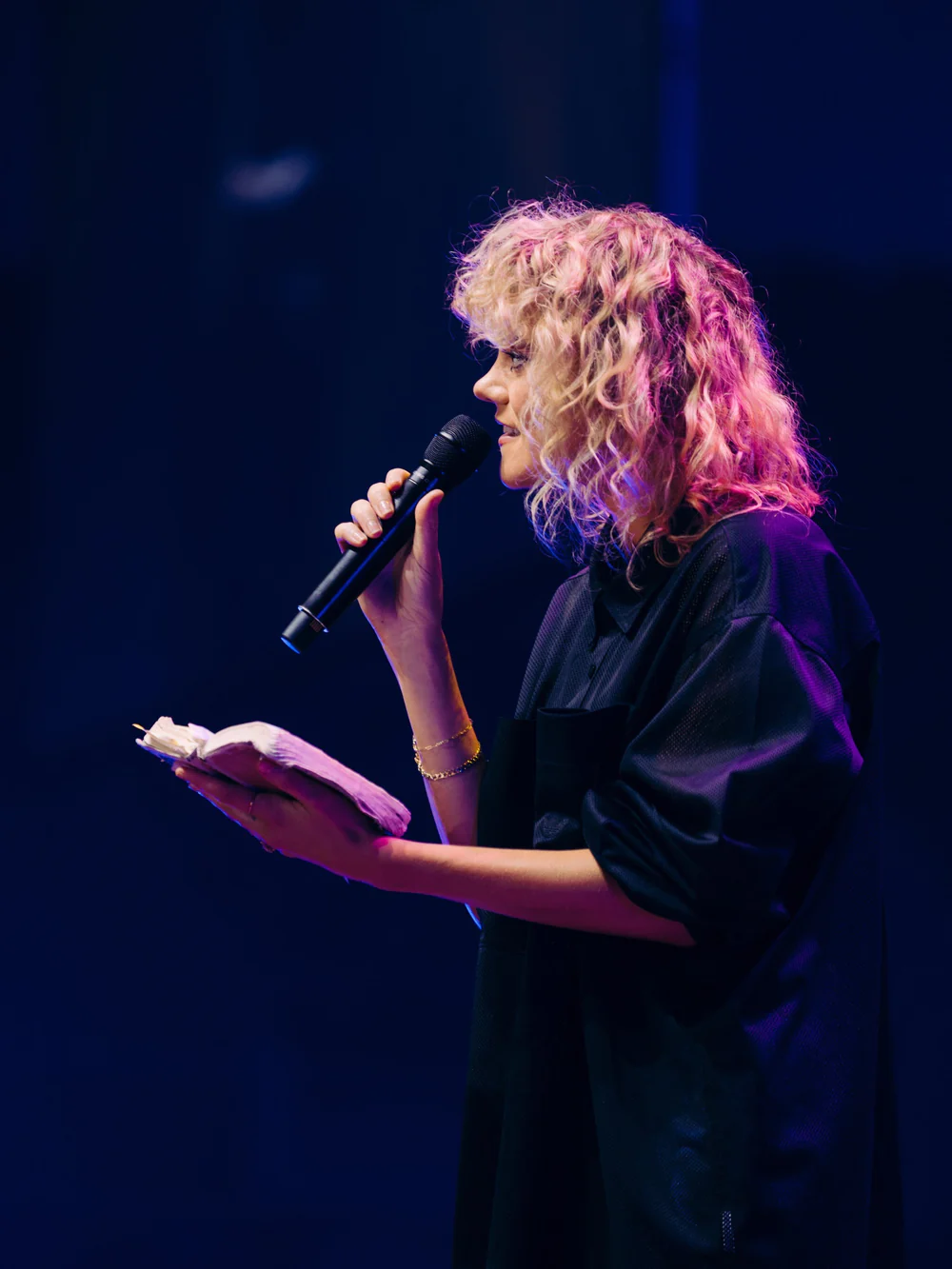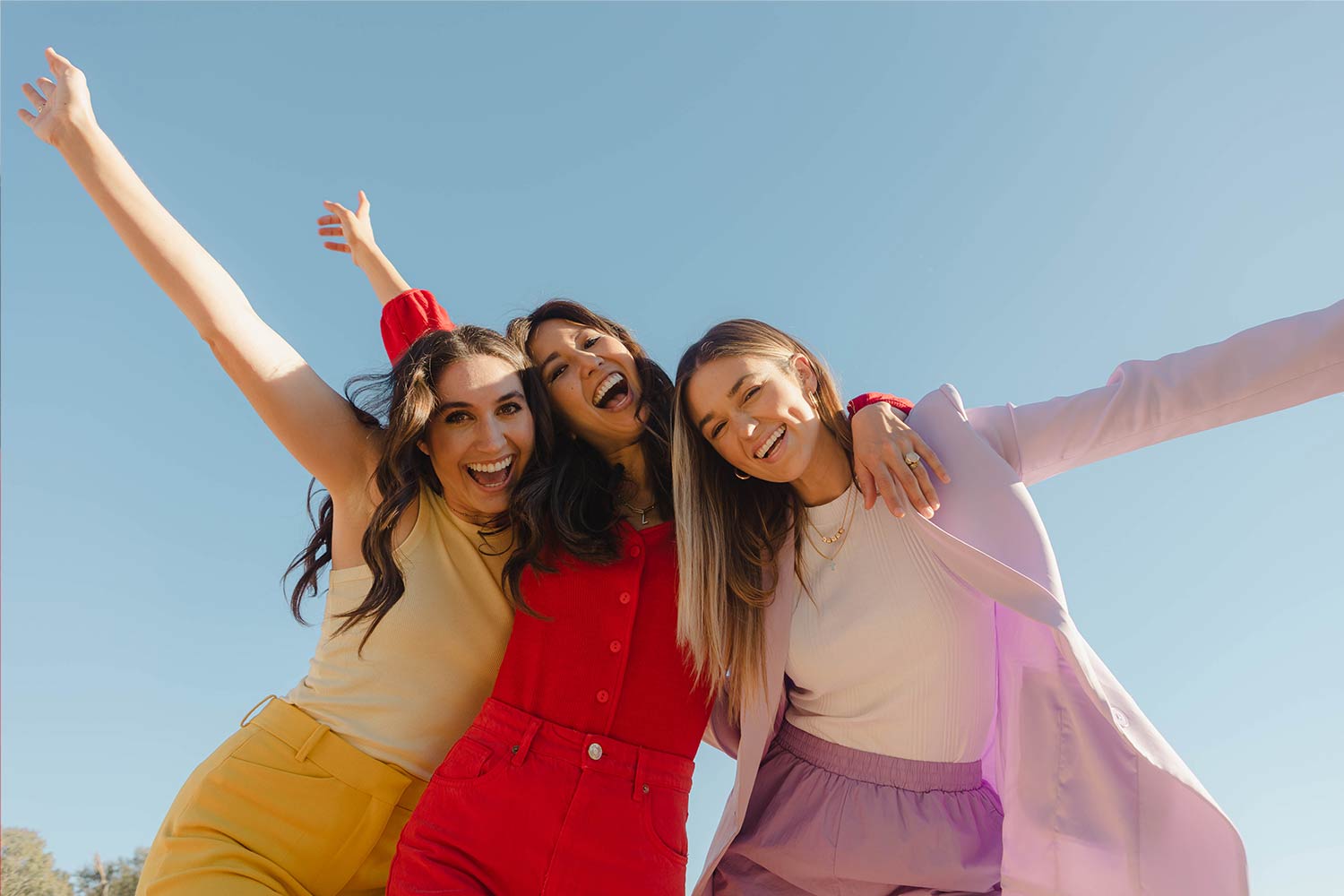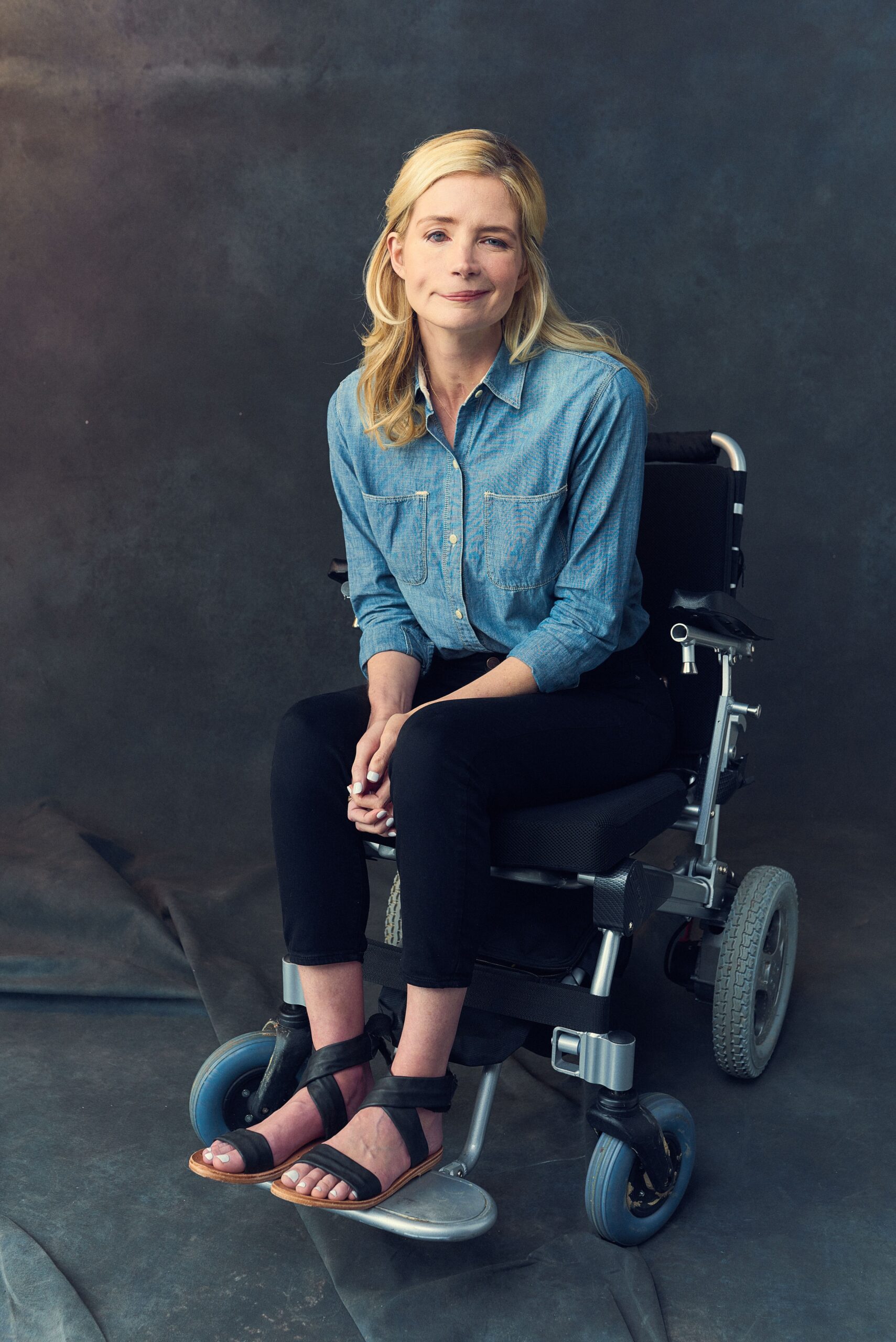
Walking Away From Shame
After being raised in the South by women who dared not leave the house without lipstick, then subsequently working as an actress and model in my early twenties, my relationship to beauty and satisfaction with my body feel complex at best. That complexity exponentially multiplied after I suffered a massive brain stem stroke at age 26, just a few months after giving birth to my first child.
In the blink of an eye, I could no longer walk, talk, swallow, drive, or care for my son. The soft postpartum tummy and bags under my sleep-deprived eyes suddenly paled in comparison to the reality of drooping facial muscles and limbs that no longer responded to neurological commands. My body had become distinctly different after pregnancy. Now, after a catastrophic stroke, it was altogether foreign.
Over years spent in physical rehabilitation, I learned new ways of navigating the world in my modified state. But, even in the healing and adapting, my body remained alien to me. To this day, my face is partially paralyzed, I require a wheelchair to get around, I have severe double-vision, and my fine motor control is mostly gone. I struggled to love my body when it was “normal.” How was I expected to love it now?
So many of us have internalized messages that we must meet certain metrics to be accepted. You’ve gotta look good while you do good. You’ve gotta pull it all together and not let anything unappealing hang out. You’ve gotta be enough but also not too much. In other words, to be loved by others requires that we put in a lot of effort and put on a lot of makeup.
Beneath our pursuit of external beauty and eternal youth is both a deep fear—to escape death—and a deep longing—to be loved without having to earn it. Our pain-avoidant and death-phobic culture tries to calm our fears of aging with every manner of creams, injections, and workout classes. Buy this. Eat that. Be young and beautiful forever.
While my stroke stole much of my independence and traditional “beauty,” it also disabused me of the illusion that death can be outrun. I met death when I was 26. The sweeping magnitude of that experience means I no longer participate in the fruitless charade of covering up my flaws or concealing my brokenness—both physical and emotional— because I now know that life is simply too tenuous to carry the burden of shame.
Being satisfied in our skin isn’t so much about looking the right way. It’s about surrendering the shame surrounding our deficits. When our eyes move past our own navels and onto the panoramic view of the goodness of existence, shame no longer has a place in us. Spending our time picking apart imperfections and shelling out resources to fix flaws will prove to be a tragic waste in the end. Shame is a costly habit with a paltry return on investment.
The body positivity movement, which rejects a narrow beauty standard and celebrates a wide spectrum of bodies, has brought healing to so many people by challenging the baseless status quo of how a body is supposed to look, and I applaud that. Lately, however, I’ve been intrigued by the concept of body neutrality, which focuses on what our bodies can do rather than how our bodies look. As a woman with physical disabilities, even body neutrality is a complex practice to engage because my body no longer does so many of the things it used to. So how can I befriend my body when it doesn’t always measure up to standards of beauty or utility?
While my hands don’t always cooperate and my gait is wobbly, this body of mine tirelessly serves as my only available interface with existence itself. My broken brain, eyes with double vision, and paralyzed vocal cords continue to ping signals of beauty from the outside world, from inside my mind, and from the heart of God. I’ve come to appreciate that the interplay of my inner being and outer form are the very embodiment of the cruciform life: Christ’s perfect power playing out through imperfect flesh-and-blood means.
We can be grateful for each facet of our inner and outer selves because God blends the beautiful stuff and the broken stuff to create the lives, families, passions and purposes we have today. We can train ourselves to celebrate the cellulite because it’s sprinkled on the body that allows us to engage that existence. And by walking away from the shame of what I should look like and how I should function, I’m robbing the fear of death of its power. I’m choosing to use my one precious body to fully engage my one precious life, while believing the best comes after the death of this body. The wrinkling and softening of age feel less scary when I reframe them as mile markers along the rich journey to eternity with God.
I’m training myself to not merely tolerate but celebrate my broken brain and body because they didn’t ruin my perfect life. Rather, they gave me the gift of a good/hard life. Because my outer body has suffered, my inner life has flourished. I have reframed my deficits as grounding truths that remind me my worth was never tied to my facial symmetry or fitness level. I am freed from the crippling burden of chasing youth or the perfect figure because my gaze is fixed on the grace gift of existing rather than the shame of imperfection.
When I look at my paralyzed face, I see a woman in the process of transformation. When I see stretch marks from pregnancy, I see the beautiful children who came from my body. When I see stretch marks that aren’t from pregnancy, I see bountiful feasts I’ve enjoyed. When I see bags under my tired eyes, I see a hard-won second chance at life. When my standard of beauty is redemption, not weight; when it’s sacrifice, not self-absorption; when it’s new life, not chasing youth gone by, I can see how my body embodies the grace gift of a second chance at simply existing.
This excerpt is taken from The Powerful Workshop inside the LO sister app and written by the amazing Katherine Wolf! LO sister is all about championing women to live out their purpose. We believe that happens with prayer, support and encouragement. If you’re searching for a safe place to be heard, share, and encourage others in their lives, too, this is the community for you, friend! Join here!
Katherine is a communicator and advocate. She leverages her redemptive story to encourage those with broken bodies, broken brains, and broken hearts. Engaging both faith-based and secular communities, she seeks to bridge the gap between those disabled on the outside and those disabled on the inside with the hope that Jesus brings healing to the deepest pains we all carry. She currently reside in Atlanta Ga with her husband Jay and two sons, James and John. To connect, visit hopeheals.com or @hopeheals



